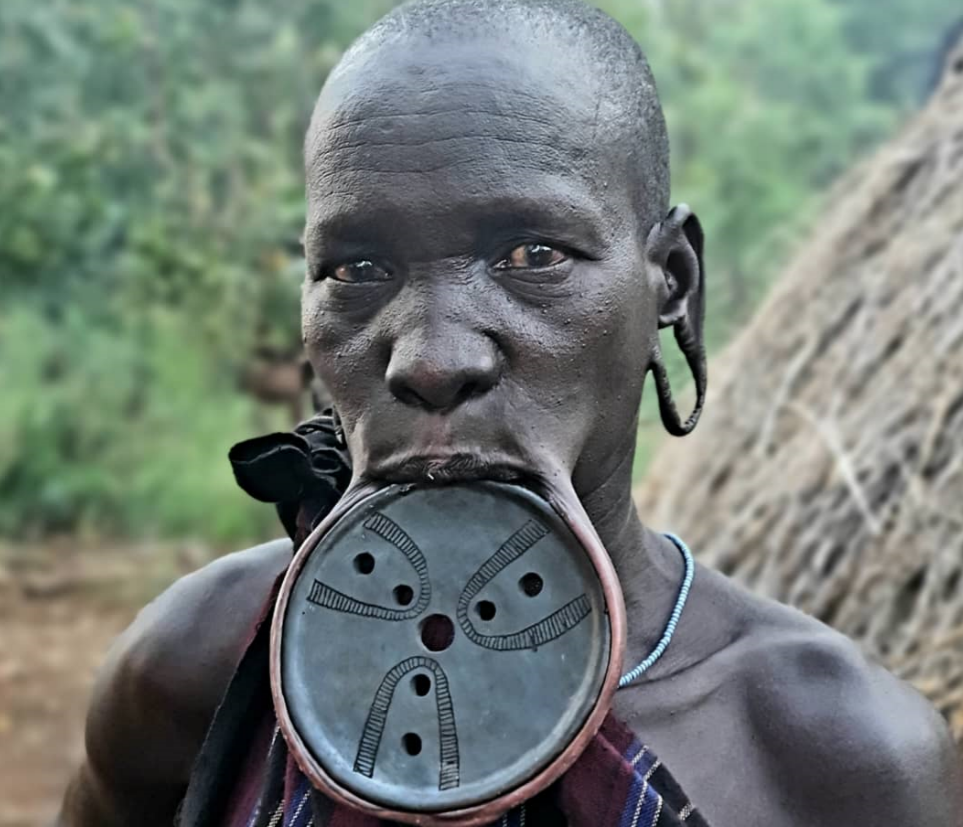Introduction
The Omo Valley in southern Ethiopia is one of the most culturally rich regions in the world, home to over 15 distinct tribes. Each community has its own customs, language, dress, and ancestral practices. For travelers seeking deep cultural immersion, visiting the Omo Valley is not just a trip — it’s a journey into the living history of Africa.
In this Omo Valley travel guide, we introduce you to three of Ethiopia’s most iconic tribes: the Mursi, Hamar, and Karo — communities known for their strength, beauty, and unique traditions. These tribes are often included in most Omo Valley travel itineraries, and for good reason.
1. The Mursi Tribe
– Symbol of Strength
The Mursi people are internationally known for their dramatic lip plates, traditionally worn by women. While the plates have often been misunderstood or exoticized by outsiders, they hold cultural meaning related to female identity, strength, and social status.
But there’s far more to the Mursi than just appearance.
🔍 Highlights:
Located near Mago National Park
Practice agro-pastoralism (farming + cattle herding)
Speak the Mursi language (a Surmic tongue)
Known for scarification patterns, body paint, and warrior rituals
Lip plates are inserted during adolescence (optional, not required)
💡 Ethical Tip: Always ask before photographing — lip plates are cultural symbols, not tourist props.
2. The Hamar Tribe
– Ritual, Rhythm, and Beauty
The Hamar people are warm, proud, and vibrant — often remembered by visitors for their hospitality and deeply rooted customs. Their most famous tradition is the bull-jumping ceremony, a rite of passage for young men to prove their adulthood and readiness for marriage.
Women wear red ochre and butter in their hair, layered beads, and animal skin skirts — each part of their attire tells a story of age, role, and status.
🔍 Highlights:
Based around Turmi, in the central Omo Valley
Speak the Hamer-Banna language
Women sing special “evangadi” chants before bull-jumping events
Known for scarification, body adornment, and dance
Markets in Turmi offer a deep dive into local trade and social life
🎯 Pro Travel Tip: Time your visit with a bull-jumping ceremony your guide can check tribal calendars for upcoming events.
3. The Karo Tribe
– Artists of the Omo River
The Karo people are the smallest of the Omo Valley tribes in population — but their artistic expression leaves the biggest impression. They live along the eastern banks of the Omo River, using white chalk and natural pigments to decorate their bodies in breathtaking patterns for ceremonies and dances.
Their decorations aren’t just for beauty — they represent tribal identity, spiritual beliefs, and life stages.
🔍 Highlights:
Reside in Korcho village and nearby riverbanks
Expert body painters and ceremony designers
Skilled in beadwork, clay ornaments, and face painting
Have a deep spiritual connection to nature and the Omo River
Use natural dyes from local plants and minerals
📸 Photography Tip: Karo villages offer stunning views of the Omo River cliffs — arrive at sunset for magical light.
How to Visit These Tribes Respectfully
Whether you’re a photographer, researcher, or cultural explorer, your visit leaves an impact. Here’s how to ensure it’s a positive one:
Travel with a local guide who speaks the language and understands tribal customs
Pay village entry fees directly to elders or guides
Never photograph without permission
Support the community by buying handmade crafts
Learn before you go — understand their world, don’t just observe it
✅ Ready for an unforgettable Omo Valley travel experience? Book your cultural tour in Ethiopia today and meet the Mursi, Hamar, and Karo tribes.
Common FAQs:
1. What is the best time for Omo Valley travel?
The best time to visit the Omo Valley is during the dry seasons — December to March and June to September. Roads are more accessible, and tribal ceremonies often take place during these months, making it ideal for cultural tours in Ethiopia.
2. Which tribes can you visit during cultural tours in Ethiopia?
Cultural tours in Ethiopia’s Omo Valley typically include visits to iconic tribes such as the Mursi, Hamar, Karo, Dassanech, Ari, Banna, and Nyangatom. Each community offers unique traditions, attire, and ceremonies that reflect the valley’s rich heritage.
3. Are the Mursi, Hamar, and Karo tribes open to tourists?
Yes. The Mursi, Hamar, and Karo tribes welcome respectful visitors. Traveling with a knowledgeable local guide ensures you follow cultural etiquette, gain deeper insights, and support the communities through entrance fees and craft purchases.


